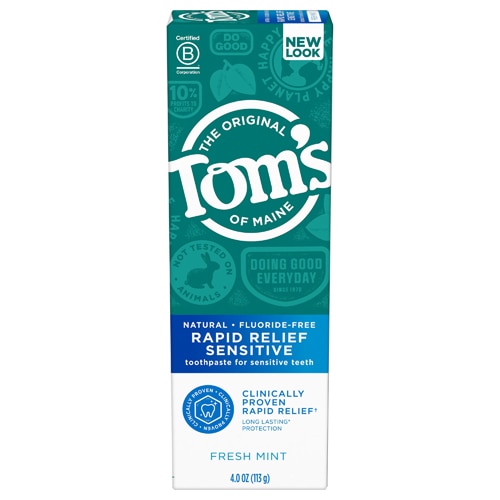Whitening your teeth with over-the-counter products like whitening strips can bring a bright smile to your face. However, new research on whitening strips might make you frown — and might make you consider natural whitening solutions.
Are whitening strips safe?
Three studies overseen by Kelly Keenan, associate professor of chemistry at New Jersey’s Stockton University, suggest hydrogen peroxide, the active ingredient in whitening strips sold at places like supermarkets and drugstores, can damage protein-rich dentin tissue below the tooth’s protective enamel surface. It’s already been demonstrated that improper use of hydrogen-peroxide-based whitening products — such as applying too many whitening strips or applying them too often — can damage tooth enamel.
A Keenan-led team of researchers found that concentrations of hydrogen peroxide like those in whitening strips can eliminate dentin’s collagen protein. The researchers acknowledge, though, that their tests didn’t determine whether such damage is permanent.
Dental care experts insist whitening strips with hydrogen peroxide and similar over-the-counter products generally are safe and effective as long as a user follows the directions. But those experts also warn that these whitening methods can lead to tooth sensitivity.
So, what if you’d rather skip tooth bleaching altogether and whiten your teeth with something from Mother Nature? Opinions on popular natural options are divided. Here’s the eye-opening (and mouth-opening) lowdown on three of these options.
Apple cider vinegar
Dr. Shahrooz Yazdani, a dentist who practices near Ottawa, Canada, touts apple cider vinegar as “a great natural way” to whiten your teeth since it removes the buildup of harmful plaque. However, Yazdani adds, since apple cider vinegar is so acidic, it’s important to thoroughly brush your teeth and rinse your mouth with water after using it.
The American Dental Association advises against adopting apple cider vinegar as way to whiten your teeth, as the acid can wear away your enamel.
The same goes for the juices or peels of acidic fruits like lemons and oranges, says the association, which ranks citrus fruits among the worst tooth-damaging foods.
Charcoal
Dr. Greg Grobmyer, a dentist who practices near Chattanooga, Tennessee, says pastes made with natural abrasives like activated charcoal and baking soda are “fairly effective” at removing surface stains on teeth. A number of over-the-counter products contain activated charcoal or baking soda, Grobmyer says, or such products can be made at home.
He cautions, though, that using products with abrasive ingredients like activated charcoal and baking soda more than a few times a week can erode tooth enamel and actually expose dentin, the beneath-the-surface protein.
A research review published in 2017 in the Journal of the American Dental Association concludes that no evidence exists to demonstrate charcoal-based dental products are safe or effective for whitening your teeth. The association also says scrubbing your teeth with a mixture of baking soda and hydrogen peroxide can do harm.
“Enamel is what you’re looking to whiten, but if you’re using a scrub that is too rough, you can actually wear it away,” the dental association says.
Oil pulling
While believers extol the health benefits of the ancient remedy of oil pulling, dental professionals dismiss it as an teeth-whitening alternative.
According to Healthline, oil pulling involves swishing a tablespoon of oil (such as coconut oil) around your mouth, as you would traditional mouthwash, for 15 to 20 minutes. The key benefit: Decreasing the presence of bacteria in your mouth.
“Edible oil-pulling therapy is natural, safe and has no side effects,” according to a study published in 2016 in the Journal of Contemporary Dental Practice. “Hence, it can be considered as a preventive therapy at home to maintain oral hygiene.”
The study found oil pulling was a safe, effective alternative to prescription-strength mouthwashes containing chlorhexidine gluconate, which fights gum disease.
On his website, Dr. Josh Axe, a doctor of natural medicine in Nashville, Tennessee, goes a step further by proclaiming oil pulling is “one of the best ways to naturally whiten your teeth.”
But as Healthline, the American Dental Association and others point out, scientific evidence does not support oil pulling as a valid approach to teeth whitening.
“Oil pulling might be popular in some circles, but in the end, its whitening and oral health benefits are untested and unlikely to compare with methods that have been properly researched,” dental care brand Colgate says.
Tried-and-true whitening method: Proper oral hygiene
No one disputes the value of regular dental checkups along with daily brushing and flossing as ways to keep your mouth health and your teeth white. For maximum effect, some dental experts recommend the addition of whitening toothpaste to your oral hygiene regimen.
However, the Mayo Clinic notes, “the effects of whitening toothpaste usually are not dramatic. It can’t change the natural color of your teeth or lighten a stain that goes deeper than a tooth’s surface.” Whitening strips actually produce better results than whitening toothpaste alone, the Mayo Clinic says.
If you prefer natural toothpaste, keep in mind that it might freshen your breath, kill germs and even help whiten your smile, but it won’t fight tooth decay if it’s free of fluoride.
To step up your whitening game, the Mayo Clinic suggests exploring treatments available from dentists. The clinic says they’re generally safe, and they’re often more effective and longer-lasting — yet more expensive — than over-the-counter products.
Aside from regular dental checkups and daily dental care, you can take a couple of simple steps to lessen the need for tooth-whitening products:
- Cut back on beverages that stain your teeth, such as coffee, tea, soda and red wine.
- Avoid smoking cigarettes or using other tobacco products.
While coffee, tea, soda, red wine, cigarettes and tobacco are major tooth-staining culprits, “people don’t think about things like soy sauce, tomato sauce, blueberries and beets. If it would be difficult to get a certain stain out of your shirt, it will probably stain your teeth as well,” says Grobmyer, the Tennessee dentist.





